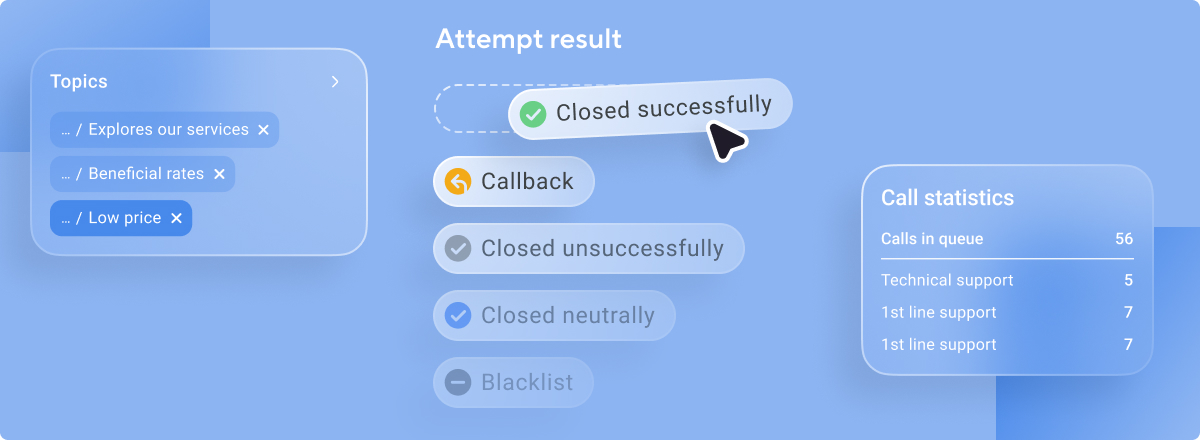Hundreds of millions of customers interact with apps and websites via phone calls or messages every day. Most of these customer requests are typical and similar. For instance, bank customers often ask operators for the location of the nearest ATM. A significant allocation of a company’s budget goes towards processing these requests and maintaining customer support services.
With the emergence of Artificial Intelligence, however, businesses can change the way that they communicate with their customers. Nowadays, businesses can use AI-based solutions to reduce costs and automate simple operations.
One of the most practical forms of AI is conversational AI that can generate human-like responses via voice or text.
What is Conversational AI?
Conversational AI is a set of technologies that allows a robot to understand, process, and respond to a human. This technology uses Automatic Speech Recognition, Natural Language Processing (NLP), Advanced Dialog Management, and Machine Learning (ML) to comprehend and carry on a conversation.

Companies primarily use conversational AI in chatbots and voice-based bots to automate customer communication with a brand. You have probably interacted with AI-based robots through chat support on a website.
A robot can communicate via voice and text in any language and dialect. You can also train and manage a robot to perform specific tasks.
Conversational AI for Businesses
Businesses use conversational AI to attract, engage, and retain customers. Compared to a human operator, a robot has several advantages:
- 24/7 availability: Robots work on holidays and off-hours meaning no customer requests will be forgotten or missed
- Scalable: A robot can handle up to a million requests per day. This is especially critical for companies that have a surge or peak hours of call volumes
- Cost-efficient: Businesses don’t need to waste time hiring and training employees
- Automated: Once a scenario is created, a robot will operate strictly without making mistakes or diverging from the script
There are various use cases of businesses that have implemented conversational AI to leverage their communications and customer service.
Customer Service
Answering hundreds of similar questions per day doesn’t require a live operator. AI-powered robots can easily respond to frequently asked questions, restaurant reservations, or order cancellations. Conversational AI can take your customer support to an entirely new level.
However, there are cases when a voice bot cannot help a customer and a human operator is necessary. For instance, there is no required data in the CRM system or the created scenario doesn’t include such a turn of conversation. In these cases, the robot can transfer the call to a live operator and provide a conversation transcription.
Lead Generation and Conversion
Conversational AI allows you to immediately react to the customer's journey through the sales funnel. A robot can:
- Consult about product characteristics such as size, shape, or quality
- Contact the customer after receiving an order request and collect the required data to place an order
- Remind a customer about an incomplete order and offer an alternative product
By integrating such a robot into your business, you can enhance your conversion rates.
Customer Research and Feedback
In order to improve the customer experience, businesses can build a survey scenario and gather feedback from customers all around the world in their native languages.
Conversational AI platforms cover multiple languages and dialects. For instance, Voximplant Kit allows you to create an automated phone survey with more than 20 languages in just five minutes.
What’s Fueling Conversational AI?
With the rise of messaging apps and voice assistant platforms, conversational AI is spreading even further.
Messaging Apps
The top three most popular messaging apps – WhatsApp, Facebook Messenger, and WeChat – have approximately four billion active users per month.

Image source: Statista 2019
Some additional facts about messaging apps:
- Around 75% of smartphone owners use at least one messaging app
- Most users spend 50% of their time on a messaging app
- Five of the top 10 apps of all time are messaging apps
Even the largest players in social media such as Facebook and Instagram have implemented one-to-one chat functions. Moreover, Facebook updated itself as a chat-first company.
Nonetheless, businesses should use communication channels where customers already exist. It’s also important to provide an option to your customers to choose the channel on which they receive messages. Conversational AI platforms allow businesses to embed AI capabilities in any channel using APIs.
Voice Assistant Platforms
Even though voice assistance technology is relatively new, customers’ interest is skyrocketing. The driving growth factors are as follows:
- Smart home capabilities
- Rapid distribution of multifunctional and smart devices
- The growing trend of personalization
According to Voicebot’s survey, 86.7 million American adults were using smart speakers by January 2020. This shows that the installed base of users has grown 32% compared to January 2019 and by 85% since January 2018.
Artificial Intelligence
Your conversational AI’s capabilities depend on the type of artificial intelligence you employ on the backend. Businesses can choose between solutions provided by tech giants such as IBM, Google, and Amazon.
The global AI market size was $48 billion in 2019. Currently, IBM is leading the race in the AI market with a global market share of more than nine percent. Runners up are Microsoft and Samsung.
Tips on Implementing Conversational AI
We’ve prepared nine tips to help you implement your own conversational AI. These tips are separated into four categories.
Purpose
- Determine communications to improve. Prioritize the value of areas where customers are already interacting with your business. In most cases, it’s customer support service or sales. Pay attention to basic operations that can be automated – responding to frequently asked questions or requests to place an order
- Identify communication channels. Your target audience already uses conversational channels. Thus, you should determine what they are and enhance these channels. It’s also important to understand how your customers prefer to interact with conversational interfaces – via text or voice. Conduct a survey or use existing third-party research to choose your channels
- Build complete experiences. Your customers should be able to complete an action without the need to switch between apps or websites. For instance, if you are building a chatbot to increase sales, make sure that you’ve considered all possible turns of conversation such as product availability and shipment options
Data
- Gather content. Conversational AI apps use existing data to communicate with customers. This may include transcriptions of support service calls, third-party data about your products, and recommendations and alerts sent to customers. Then, the content has to be filtered and updated with the missing data
- Personalize conversations. To make communications more productive, your AI-based app should use context-specific data about a customer. This may include the customer’s name, location, purchase history, or preferred time to be contacted. Personalized interactions will help you engage customers more efficiently
Design
- Provide dynamic responses. Conversational apps should understand customer intents or determine an emotional state. This can be applied by using structured menu-like interactions for user input. More complex apps can indicate a customer’s intent in real-time and generate appropriate responses
- Personify your robot. The tone of voice of your robot should fit a brand’s values and strategy. For instance, a financial service’s chatbot should use formal and precise language. In turn, a robot of a service used by younger audiences can use humor or colloquialisms to be more engaging
Integrity
- Combine robots and humans. Automation reduces costs for solving simple tasks. At the same time, it might be more cost-efficient to delegate an unusual and complex task to a trained operator. Split responsibility between humans and machines in the scenario to provide the best customer experience
- Keep conversations private. You should avoid using customers’ personal data outside conversations. Create a blanket privacy policy that addresses the specific risks, requirements, and opportunities that conversational data provides. Make security an integral part of your customer’s experience with your brand
Conclusion
Chatbots and voice-based robots are becoming an essential part of business across industries. Conversational AI, in conjunction with robots, can improve the efficiency of customer support service, sales, and marketing.
Remember that AI is the tool, not a comprehensive solution to all problems. To make it work for your business, you should conduct research on your current communications strategy and customers, identify any problems, and implement automation where it is needed.





